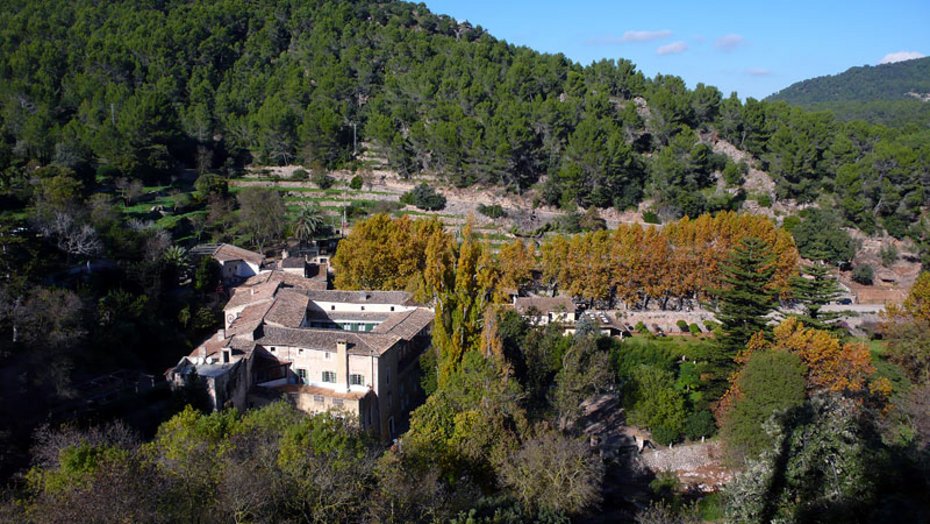The traditional architecture of Mallorca
On Mallorca, the aesthetic and traditional image of Mallorcan architecture has been preserved, especially in the villages of the island. In many cases, it is directly integrated into nature and the use of natural materials is still popular and standard today. The Romans had a significant influence on this.

It has always been normal to create the traditional style on Mallorca using materials from the island. The stone walls, for example, are famous, as are the multitude of wild olive trees (known as "Ullastre"). The olive tree, which is present everywhere, is a trademark of the island and can also be found in the architecture. The fences of the properties are directly integrated into the environment and thus preserve the traditional image.
In his lecture "The legacy of the Romans in the architecture of the island", Miquel Ramis explains what remains of the former inhabitants.
A typical example of the unique architecture of Mallorca is the Mallorcan balcony. With the stone arch, it still fits into the design today, but its origins date back to the construction of the ancient Romans. At that time they worked with lime mortar, as this was widely available on the island. The mixture of aesthetics and construction leads to the image we see today. The result is solid workmanship and visual beauty. The Roman legacy can also be seen in other areas: the construction with clay and lime, the pipes in the walls or the embedding in the cloisters. Some houses still have the classic clay bricks, others have lost the bricks known as Arabic tiles.
The current architecture is a legacy of the Roman period in two ways: the basis of the architecture, the windows, the tools and the design, were found in ancient Rome. In addition, the Renaissance saw a kind of revival of the Roman. Another interesting example is the Roman arch, sometimes known as the Roman gate, which is often found in Mallorca. It dates from the 16th and 17th centuries. The direct legacy of the Romans is therefore still very much present in Mallorcan architecture today.
It is curious that many things are attributed to the Moors, although they were actually brought to the island by the Romans. Mallorca was a province of the Roman Empire, which, after all, shaped the entire Mediterranean region. The decisive difference is the basis of the architecture: Roman construction uses stone as a basis, while Moorish construction uses mud. Roman construction is even evident in the large mosques in Cordoba or Keirouan in Tunisia. To this day, architects are trying to copy and further improve this unique Roman construction.
Behind the Bishop's Palace in Palma, a section of the old Roman city wall has even been preserved. One of the defensive towers can be found in the palace gardens. The large stones that the Romans brought into place with a lot of coordination, machines and many slaves are particularly striking. When the empire fell apart, there was a lack of planning and organization, and so much smaller stones were used.
The three basic pillars of Roman buildings are beauty, usefulness and durability. They always go together and had to be adhered to by the architects of the time. Today, at least one of these principles is usually forgotten. Either it is very beautiful but useless, or it is very useful but rather ugly. The Romans knew that they were building to last forever and that is where this principle of their architecture came from.
That is why a lot of investment was made right from the start so that they would not have to be repaired after just a few years. Water pipes, bridges and baths were built to last for generations, as it was never clear when they would be looked after again. The best example of this is the Roman road, which has been well preserved in Mallorca. Here you can still find the real stones of that time, as well as on the mountain roads that the Romans built using a similar technique.
Today, the construction of such projects is much faster. Large machines and many resources are used, but the results are usually still poor. Every three or four years things have to be replaced or constant maintenance is necessary. Soon the costs of this will become a crisis for the municipalities and consume unnecessary resources.
Perhaps it is time to abandon iron and plastic and return to local materials. It is pointless to spend the island's money on preserving monuments or monstrosities - especially when they look like the Congress Palace. There is simply no money for that.
Mallorca was once an agricultural colony dominated by the cities of Palma and Pollenca. The companies exported their products to the major cities of the empire. These included grapes, onions and "or'garum", a broth made from fermented fish. Cheese was produced on Menorca and there was salt and juniper on Ibiza. The Romans were meticulous about ensuring that local resources were sufficient to provide for the people. If they were not sufficient for the number of people, new areas were simply conquered.
For over 2000 years, Roman law created a structure that declared the regulation between private property and public land and created the first general rights for people. Aerial photographs show how the Romans provided for people with the basis of their architecture. However, when the Roman Empire ended and the Middle Ages began, architecture changed completely and the Roman treasures were lost. Compare the different areas of Mallorca for yourself and see where the Roman legacy can still be found in the landscape and architecture today.
